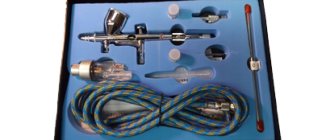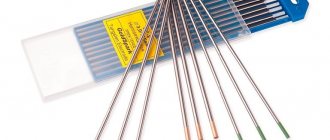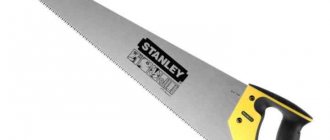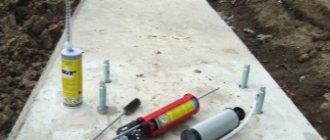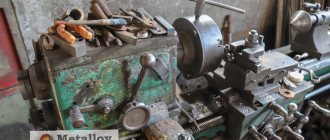Lifting equipment (HL) is one of the few in demand today in literally every area of production and industry . Compact and lightweight devices that do not require the installation of crane runways are especially relevant. Small, lightweight GP equipment is welcome in any warehouse, any workshop, and even any home garage.
The hoist is a lightweight and compact lifting device designed to perform any rigging, installation and dismantling work, as well as loading and unloading operations. The lifting capacity of the hoist can range from 0.1 to 5-7 (t). The lifting height of the load is in the range of 1.5-10 (m), depending on the specific model.
The operation of the hoist is based on the difference in the diameters of the gears involved in the transmission of force. The gearbox makes it possible to increase the traction force tens of times, which makes it easy to move multi-ton weights by turning the drive with a chain or lever manually.
Today there are a hundred or two models of lifting hoists. There are so many subtypes of this type of GP equipment that sometimes only the catalog nomenclature can suggest the optimal hoist option for a particular case. This review will discuss how to choose a lifting hoist.
Manual models
Manually driven hoists are the simplest version of lifting equipment. These are the lightest and most compact models. The vast majority of manual hoists are designed for stationary placement . Such devices are simply suspended from a wall or ceiling bracket using a hook.
Less common are mobile hoists with manual drive . This type of GP equipment is moved either by a rotating console or along a suspended beam. In the first case, the hoist is simply suspended from the edge of the console, which in turn rests on a column or is attached to the wall/ceiling. In the second case, the lifting hoist is suspended from a trolley, which is able to move freely along the beam. In some cases, the beam itself can be movable, similar to the principle of an overhead crane.
By the way, both the console and the beam with the trolley can be controlled manually or using an electric drive. In the case of using an electric beam with a trolley/console, the lifting mechanism is hybrid . The hoist itself lowers and lifts the load only manually, but it is possible to control the movement of the trolley/console (right-left or back-and-forth) using a push-button remote control.
How to choose a manual lifting hoist.
Manual drive type
Manual hoists can also be classified according to the type of drive:
- Chain
- Lever
Chain hoists lift and lower loads by rotating the chain, which drives the main gear shaft of the gearbox. In lever hoists, the drive shaft-gear rotates due to the movement of a long handle.
The chain drive allows you to lift loads to a fairly high height , about 10 meters. Lever models are usually placed only at the height of a raised hand, up to 3 (meters), so that it is convenient for the user to operate the lever.
The main advantage of lever hoists is the absence of a drive chain , which makes lifting equipment lighter and more practical. In this case, the chain will not get tangled during storage and transportation.
What other types of lifting hoists exist?
Types of chain hoists
Manual chain hoists are most often created on the basis of two types of mechanisms: gear and lever.
- Gear hoists. The main unit in them is the hoist block in which the gearbox is located. The input gear of the gearbox is connected to a control circuit, through which the operator transfers the motion energy to the hoist mechanisms. The output gear is connected to the load chain. The gearbox reduces the physical load required to set the hoist hook in motion. In addition, the gear transmission reduces the load on the lift mechanisms, increasing its service life.
- Lever hoists. Structurally similar to gear ones, however, devices of this type receive mechanical energy not through a control circuit, but through a lever. Lever lifts are more compact, but models with significant lifting heights are extremely rare among them.
There are also worm gear manual hoists. However, due to the high cost and complexity of the design, such models are gradually leaving the market.
Video - How a chain hoist works and what it consists of
Gearbox type of manual hoists
The vast majority of manually driven hoists have a gear device . In the past, hoists were equipped with a worm gearbox . Today, worm-type models are still found.
The gear reducer is superior to its worm counterparts in almost all respects.
A gearbox based on gears is much smaller and lighter than a worm. The gears are not subject to idle rotation. They are more reliable and durable than worm gears.
The main advantage of hoists with a worm gear is the price. Despite the greater weight and dimensions, GP equipment with a worm gearbox is cheaper than gear analogues.
How to choose an electric hoist.
Electric hoists
An electric hoist (telpher) is a motorized lifting equipment. In such devices, all the work of lifting and lowering the load is performed by an electric motor or gear motor .
Electric hoists typically use a drum to wind the cable. In some cases, a chain may also be used. Chain hoists with an electric motor completely repeat the operating principle of manual hoists with a chain and lever device. But instead of a drive chain or lever, this technique uses an electric motor.
Electric hoists with a cable drum are characterized by increased load capacity , from 0.3 to 15-20 (t). In this case, it becomes possible to lift the load to a sufficiently large height , from 2 to 20-30 (m).
As in the case of manual hoists, hoists can be intended for stationary installation or installation on mobile consoles/carts. Regarding hoists with a trolley, such GP equipment is suspended from a beam. The beam itself can be either stationary or sliding along the crane tracks.
What other types and types of lifting hoists exist.
Which hoist should I buy?
First, let's figure out what hoists are. All devices are divided into two large categories - electric and manual. The first group includes electric hoists and hoists. A telfer is the same electric hoist, but equipped with additional devices and more functional. The devices cannot operate without being connected to a power supply. Models are available for 220 V and 380 V networks. Electric hoists and hoists can work with loads weighing up to 25 tons.
Manual hoists according to the type of lifting mechanism are divided into two groups:
- lever - controlled using a lever, suspended at a height of up to two meters, load capacity up to 5 tons;
- gear - controlled using a long chain, can be suspended at a height of up to 12 meters, load capacity up to 10 tons.
Manual hoists can not only lift, but also move loads. For this purpose, the devices are equipped with carriages that move along a monorail.
To work with loads weighing up to 10 tons and lifting them to a small height, a manual hoist is quite suitable - purchasing an electric hoist is unprofitable. But to speed up work and lift heavy loads, devices with an electric motor are needed.
Mobile hoists
The electric hoist can be fixed on a rotary console . In this case, the console itself can be rotated either by hand, using the flexible load-handling member of the hoist itself, or using an electric drive. All-electric lifting consoles have become widespread. The GP equipment control panel contains buttons for both lifting and lowering the load and turning the console left and right.
Most often, the hoist is installed on a mobile trolley , which is suspended from a crane beam. In this case, the beam itself is equipped with movable wheels (carts), which allows it to easily move back and forth around the room.
The hoist as part of the crane beam has the following capabilities:
- Raise and lower loads
- Move the load left and right
- Move load back and forth
As a rule, the crane beam has 2 control panels. The first control panel has buttons for lifting/lowering the load and moving the trolley left and right. The second remote control is usually only responsible for moving the beam back and forth around the room.
Often, for production needs, a beam crane is created with two independent electric hoists . In this case, hoists can be of the same rated load capacity or different. One beam crane with hoists of different load capacity ratings is often used in metallurgy and chemical production. The main hoist, with a higher load capacity, is designed to lift a ladle with molten metal or a container with liquid. The second hoist, with a lower nominal load capacity, simply turns the bucket/container over.
A complex beam crane can be considered a junior modification of an overhead crane.
Comparison
Both models have their own advantages and disadvantages, making their use ideal in some conditions and impossible in others.
Manual lifts are much lighter than electric ones, they are smaller in size and easy to install, which allows them to be installed even in extremely cramped circumstances. In addition, they are much cheaper and do not require electricity, which means that work will not be interrupted if the lights suddenly turn off.
Boris Damchuk
auto RU
Electric models do not have these advantages, but they provide excellent load capacity, productivity, quality and speed.
More on the topic: Description of 1 ton hoist models
They are not intended for small household work, but are widely used in heavy industry, when working with dangerous goods in difficult operating conditions. The versatility and indispensability of electric hoists fully compensates for both the high price and installation difficulties.
Any types of hoists are prohibited from being used for lifting people and animals, as well as loads whose weight exceeds the load-carrying capacity of the device specified in the specification. All work stops immediately if the chain becomes twisted or gets stuck inside the mechanism. Also, hoists cannot be used for horizontal movement of loads by dragging, that is, without lifting them off the ground.
It is forbidden to stand under a load fixed at a height, or leave it suspended for a long time. Each load must be securely secured with a hook; Under no circumstances should you simply tie the load with a rope!
These and other safety rules are specified in the instructions included with each product; By adhering to them, you will not only be able to avoid possible accidents, but also achieve stable, high-quality operation of the mechanism for many years.
Now let’s look at an example of several models of hoists and hoists with universal load-carrying capacity indicators.
2 t manual chain hoist “Tor”
- Load capacity – 1.5-2 tons
- Lifting height – 6 m
- Chain length – 6 m
- Working force – 22 kg
- Dimensions – 350*240*170 mm
- Weight – 21 kg
Telpher 2 t mobile chain "BalkancarPodem"
- Load capacity – 2 tons
- Lifting height – 3.2 m
- Cable length – 3.2 m
- Operating voltage – 220 V
- Rated power – 1 kW
- Dimensions – 650*420*210 mm
- Weight – 54 kg
Tal 2t electric Bulgarian T-10
| № | Helpful information |
| 1 | Load capacity – 2 tons |
| 2 | Lifting height – 18-36 |
| 3 | Cable length – 22-40 |
| 4 | Load lifting speed – 8 m/mi |
| 5 | Carriage moving speed – 20 m/mi |
| 6 | Operating voltage – 380 |
| 7 | Rated power – 3 kV |
| 8 | Dimensions – 1630*1235*640 m |
| 9 | Weight – 710 k |
More on the topic: Characteristics of hoists with a lifting capacity of 5 tons
Additional Information
Many manufacturers of lifting hoists also offer auxiliary equipment . The list of additional products includes:
- Idler and drive wheels, separately
- Mobile trolleys assembled, without hoist
- Hook hangers
- Slings
- Wall and ceiling brackets
- Beams and consoles
- Crane tracks
- Remote control
- etc.
In order to save money, competent craftsmen often buy a lifting hoist separately and the remaining elements of a mobile cart separately. Products from the same company usually have good compatibility.
A self-assembled crane beam will cost 20-30% less than similar equipment assembled by the seller.
